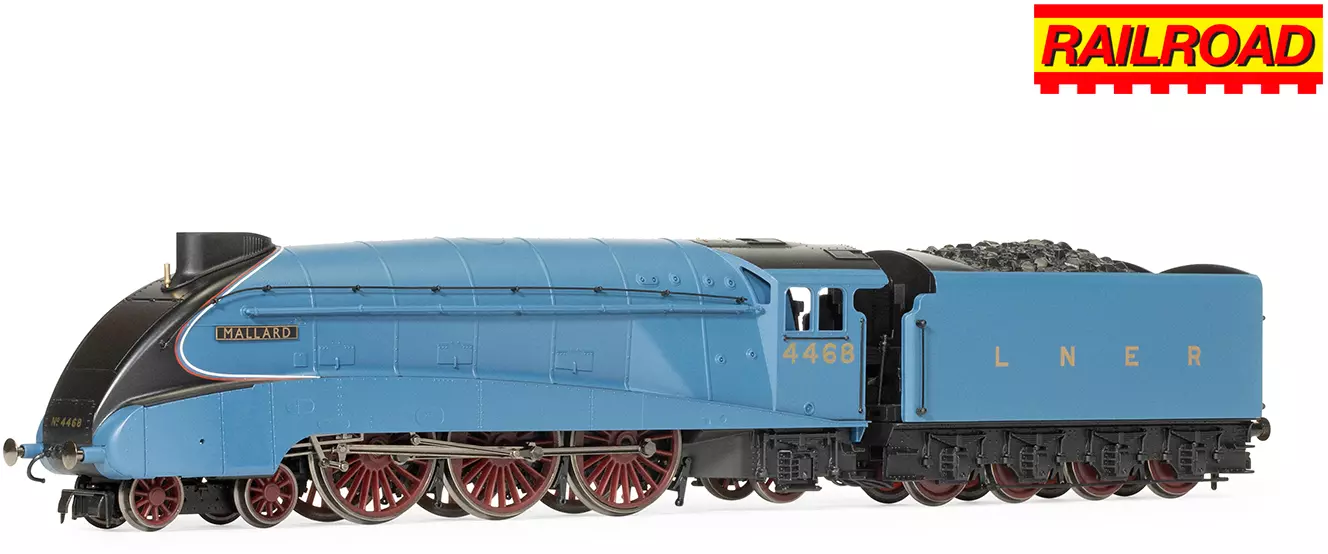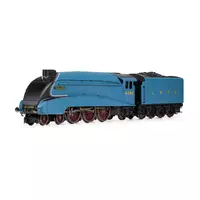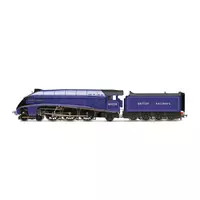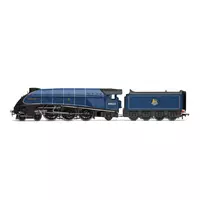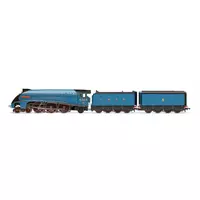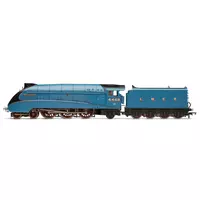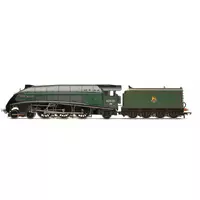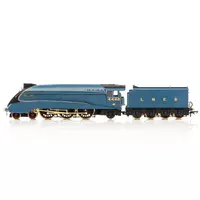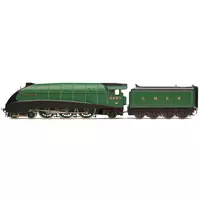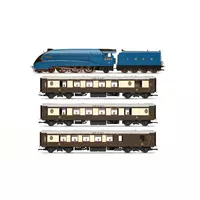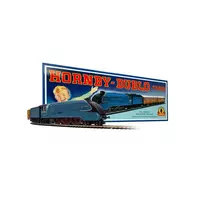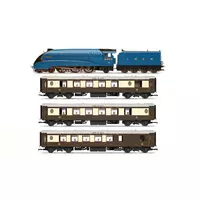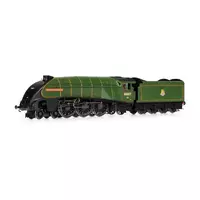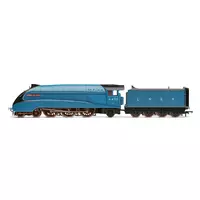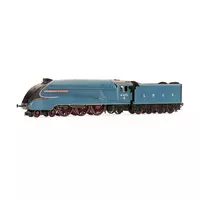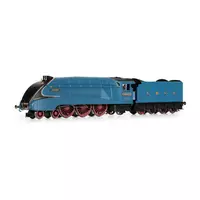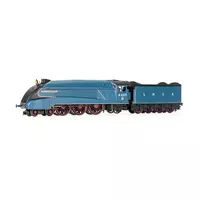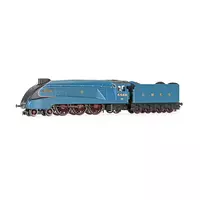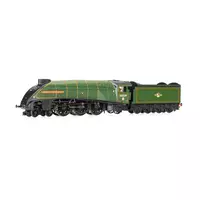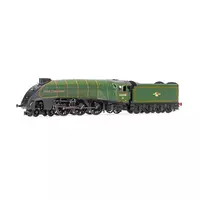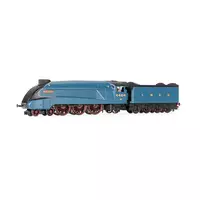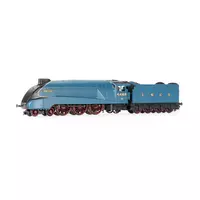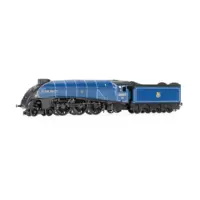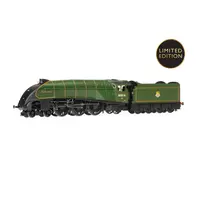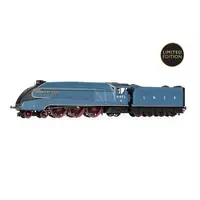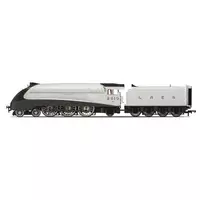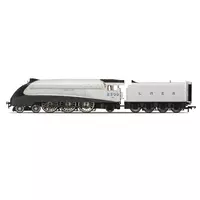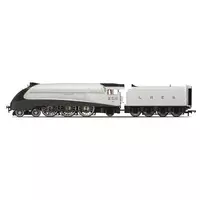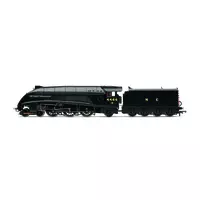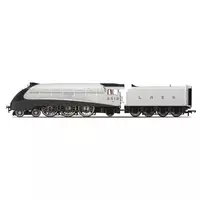Manufacturer catalogue image - please note that pre-release images may be CAD renders or CGI images rather than photographs
Prototype Era
Era 3 (1923 to 1947) The Big Four (LNER, LMS, GWR and SR)
Manufacturer description
The LNER Gresley A4 is probably the most iconic Pacific Express design of locomotive in Great Britain, with its streamlined casing. It was a classic symbol of the attitude towards speed and design in the 1930s, which saw increased competition to the railways from road and air travel. The LNER Board knew that they had to make travel between the major cities faster, comfortable and more reliable. High speed diesel services were starting to make an impact abroad and in May 1933, the German State Railways diesel-electric Fliegende Hamburger entered service, running for extended periods at 85mph.
By 1934, in the USA, Burlington Zephyr had reached 112.5mph during a longer 1,015 mile journey. Nigel Gresley, the LNER's Chief Mechanical Officer, travelled on the Fliegende Hamburger and was impressed by its streamlining, although he realized it was only efficient at high speeds. Gresley was certain that a modified A3 Pacific, with streamlining, could haul greater loads than the German or US locomotives, at the same speed or faster and a series of trials were conducted to confirm the Al's suitability.
With the trials successfully completed, the LNER Board gave Gresley the go-ahead to create the "Silver Jubilee" streamlined trains, the first of the new streamlined A4s.The streamlining of the A4s' steam circuit, higher boiler pressure and extension of the firebox to create a combustion chamber made them more efficient than the A3 as they consumed less coal and water- especially later on when they were also fitted with a Kylchap double chimney. This improved their free steaming capabilities further. Their streamlined design not only made them capable of high speeds, but created an up draught of smoke, preventing obscuring the driver's vision that was such a major problem on the Class A4 engines. The story goes that during wind tunnel testing, after several unsuccessful efforts to get the smoke to lift clear, a thumbprint was inadvertently left on the clay model just behind the chimney. This succeeded in clearing the smoke and was incorporated into the final design.
In total, 35 A4s were built in four batches: 2509 - 2512, 4462- 4469, 4482 - 4500 and 4900 - 4903, between 1935 and 1938. They spent their working lives hauling express passenger services from King's Cross to Edinburgh via York and Newcastle. Although the Deltics proved worthy successors of the A4s on East Coast Mainline express services in the late 1950s, other diesel classes were unreliable. The A4s were kept in service until the mid-1960s, the last service under British Rail being the Aberdeen-Glasgow service on September 14, 1966.It was in July 1938 that 'Mallard' was recorded travelling at 126mph at Stoke Bank on the East Coast Mainline, snatching the record from the German railway by a mere 1.5 mph - a record that still stands to this very day.
Produced under license for SCMG Enterprises Ltd © SCMGE.
Produced under licence for SCMG Enterprises Ltd. National Railway Museum © SCMG. Images and packaging designs © SCMG. Every purchase supports the museum. www. nrm.org.uk
Catalogue listing
Model details
Prototype information
* Class names often change over the lifespan of a locomotive, so this is not necessarily the class name used by the operator in the period modelled.
Supplier links are provided for your convenience and do not guarantee that the product is currently available. RailwayModels.uk is not a representative of these suppliers, but may receive a commission when purchases are made through links on this page.
